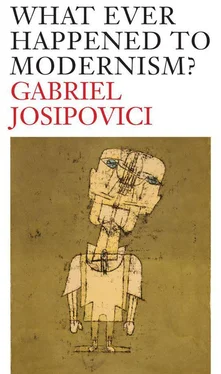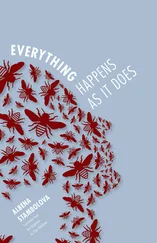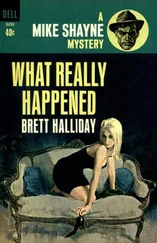This coexists in Dürer with a Humanist belief that the mastery of art consists of a combination of theoretical insights with practical skill. The one without the other is no use, he says, in a tone very like Leonardo's. Yet the fact remains that in this engraving what we have is something very different from the optimism of Florentine art. Melancholy is obviously thinking furiously, but is incapable of action, while the putto is scribbling furiously but we sense that what he is doing is of no value since it is quite without authority. Both the putto and Melancholy herself seem to be locked in a world in which there is simultaneously endless time and no time at all. They remind me of the mad energy without direction of Swift's Grub Street Hack in A Tale of a Tub , and of Hofmannsthal's Lord Chandos, hoping that by returning to the Ancients he will find a way out of his crisis, but
I was unable to reach them … They were only concerned with each other, and the deepest, most individual part of my thought was excluded from their dance. In their company I was overcome by a feeling of terrible solitude; I felt like someone who had been locked into a garden full of eyeless statues.
Hence it seems to me that Panofsky is wrong to try and assimilate the engraving to the neo-Platonic theory of Saturnine genius so popular amongst the Florentine thinkers and artists. To them divine frenzy is all; though it brings melancholy in its wake it can nevertheless achieve great things. Indeed, melancholy is the hallmark of genius. This view of art and the artist has of course passed into the mythology of the Western world — think of our sense of Beethoven as the archetypal artist, a notion derived not from his music but from a vague memory of the rousing sound of his symphonies and from the endless reproductions of the busts and portraits of the deaf composer clearly in the grip of forces more powerful than himself. For Dürer, on the other hand, Melancholy is inactive, and this not because she is lazy but because all work has grown meaningless to her. Her considerable energy is paralysed not by sleep but by thought. She is reduced to inactivity and despair by the awareness of the insurmountable barrier separating her from the realm of Truth: ‘The lie is in our understanding, and darkness is so firmly entrenched that even our groping will fail.’
It is no surprise to discover that Dürer's engraving, complete with hour-glass and magic square, figures in Mann's Doctor Faustus . Here the desire, even the need, to create comes to be seen not as a gift but as a curse. For while the desire to create seems to be the most natural thing in the world, something we are all born with, what is it in a world without sure relation to either tradition or authority but a meaningless self-indulgence? When the social trappings of art fall away, when patronage disappears and the artist is forced to compete in the market-place for the sale of his goods, can there be any justification for art other than the desire for money and fame? ‘Why must I think that almost all, no, all the methods and conventions of art today are good for parody only ?’ asks Leverkühn (Mann's italics). Feeling himself to be destined for music, for the rich and creative life of the composer, he quickly becomes aware of the fact that in today's world there is no place for natural, spontaneous creation; everything we do seems false, laboured, second-hand; it feels like padding, pretence, a lie perpetrated by those who like to think of themselves as artists, in collusion with a market which knows that enough people need to feel they are in touch with some higher truth to make the art business profitable. In such a world the honest artist must either stop composing or seek in some way to deflect the terrible truth and, by a deal with the Devil perhaps, find again the springs of spontaneous creativity.
All that and more, it seems to me, is already implied in Dürer's two 1514 engravings: St Jerome shows us what has got lost; Melencolia I what we are left with.
Melancholy and despair are not, however, the only responses to this new situation. Or perhaps one should say that not all those who recognised what was at issue came from German-speaking lands. Two who had the encyclopaedic ambitions of a Dante or a Chaucer, but who sensed intuitively that the combined effect of the disappearance of a sacramental universe and the coming of print had changed the rules for ever, found in the new circumstances an unexpected opportunity for comedy. They were a Frenchman, Rabelais, and a Spaniard, Cervantes.
In Chapter 33 of Gargantua (1534) Rabelais presents us with the tyrant Picrochole and his generals, who are planning the destruction of the benevolent giant Gargantua, and the conquest of his territories. Very quickly their thoughts move from these limited objectives to grandiose schemes for the conquest of the whole world:
Shall we see (said Picrochole ,) Babylon and Mount Sinai ? There is no need (said they) at this time, have we not hurried up and down, travelled and toyled enough, in having transfreted and past over the Hircanian sea, marched alongst the two Armenias and the three Arabias ? By my faith (said he) we have played the fooles, and are undone: Ha, poor soules! What's the matter, said they. What shall we have (said he) to drink in these deserts? For Julian Augustus , with his whole Army died there for thirst, as they say. We have already (said they) given order for that. In the Siriack sea you have nine thousand and fourteen great ships laden with the best wines in the world: they arrived at Port-Joppa , there they found two and twenty thousand Camels…
Picrochole is acting as tyrants have always done, assuming that his wish and the facts will coincide and his courtiers hasten to reassure him, as courtiers have always done, that this is so. Rabelais draws our attention to this megalomania and makes comedy out of it by emphasising the mad logic of what is going on: Picrochole, already, in his mind, crossing the deserts of Arabia, suddenly becomes aware of the fact that his army will need water if it is to survive. In the world of the imagination, however, this is no problem: ‘In the Siriack sea’, his courtiers reassure him, ‘you have nine thousand and fourteen great ships laden with the best wines in the world’. In reality, though, Picrochole and his army are routed by Gargantua only a few miles from his palace.
In reality? No. In reality there is no Picrochole and there is no Gargantua, nor is there any palace. In strict reality these are only the words Rabelais has written, now read by us and transformed in our imagination. But by making of Picrochole such a blatant flouter of reality Rabelais nudges us into accepting his reality — as a mad tyrant.
Picrochole may be a figure of the tyrant, but he is also a figure of the artist in his new circumstances, cut off from tradition and without either the Muses or the rules of Christian iconography to guide him as they guided Homer and the medieval artist, and so having to fall back on his imagination. The imagination is quite capable of conjuring up whole worlds, but unfortunately these worlds are made up only of words and images. The writer, alone now in his room, puts these words down on paper and, a little later the reader, alone in his room, with only the printed book in his hands, is given the tools to recreate this world in his imagination. For Rabelais this new freedom of the imagination is not, as it was for Dürer in the Melencolia , a cause of despair; but it is not a reason for rejoicing either, as it was for the Florentine neo-Platonists and has been for the majority of those who have written about art in the West since then. Rather, it is a cause of laughter.
Читать дальше












